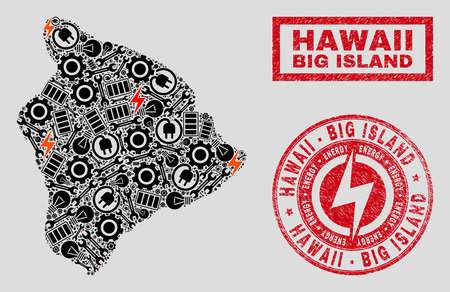1. Introduction: Hiking Footwear as an American Outdoor Icon
Hiking boots have long held a special place in the hearts of outdoor lovers across the United States. From the towering Rockies to the rolling Appalachians, the right pair of hiking boots has empowered generations of Americans to explore wild, breathtaking landscapes. Whether youre trekking through the red rocks of Utah or wandering the misty trails of the Pacific Northwest, your choice of footwear can make all the difference between an unforgettable adventure and a painful misstep.
The Roots of American Hiking Culture
In America, hitting the trail is more than just a weekend hobby—its a tradition that connects people to nature and each other. The evolution of hiking boots reflects this deep cultural bond. What began as heavy, rugged leather boots designed for durability and protection has transformed into an industry full of innovation, comfort, and style.
How Hiking Boots Shaped Adventure
American hikers have always demanded footwear that could handle everything from muddy creek beds to rocky mountain passes. Over time, this demand pushed brands to create boots that were not only tough but also flexible enough for different terrains and climates found across the country. As hiking became more popular, so did the need for better technology in outdoor gear.
Classic Leather vs. Modern Tech: A Quick Comparison
| Feature | Vintage Leather Boots | Modern Hiking Boots |
|---|---|---|
| Material | Thick, natural leather | Synthetic blends & lightweight mesh |
| Weight | Heavy | Lightweight |
| Water Resistance | Needs treatment/oiling | Often built-in (GORE-TEX, etc.) |
| Cushioning & Support | Minimal padding; sturdy ankles | Advanced cushioning; ergonomic designs |
| Break-In Time | Long (can be uncomfortable at first) | Short (ready-to-wear comfort) |
| Style & Versatility | Classic look; mostly for hiking | Diverse styles; trail-to-town wearability |
This journey from vintage leather to modern tech mirrors Americas love for innovation and adventure. As we look back at how hiking boots have changed over the decades, we see not just shifts in materials or design—but a growing passion for exploring every corner of the great outdoors.
2. The Classic Era: Heavy Leather Boots and Early Trails
When we look back at the roots of hiking in the United States, one thing stands out: the sturdy leather boots that early pioneers and adventurers wore. Before modern materials like Gore-Tex or lightweight mesh, these boots were the gold standard for anyone hitting America’s wild trails.
Why Leather?
Back in the late 1800s and early 1900s, there weren’t many choices when it came to footwear for rough outdoor use. Leather was strong, durable, and provided much-needed protection from sharp rocks, roots, and unpredictable weather. These boots often reached above the ankle for extra support—a necessity when blazing new trails through forests, over mountains, or across muddy paths.
Early Hiking Experiences
The classic era of hiking was shaped by explorers, hunters, loggers, and even soldiers who needed tough gear. These folks paved the way for recreational hiking. Their boots had thick soles made from stacked leather or hard rubber, which helped grip uneven ground. But don’t let nostalgia fool you—these boots were heavy! A single pair could weigh several pounds, making long hikes a real workout.
Key Features of Classic Hiking Boots
| Feature | Description |
|---|---|
| Material | Full-grain leather (sometimes oiled or waxed) |
| Ankle Support | High cut for stability on rough terrain |
| Sole | Thick, often with hobnails or basic tread patterns |
| Weight | Heavy (usually 3-5 lbs per pair) |
| Water Resistance | Natural leather oils provided some protection, but not fully waterproof |
Cultural Impact in the U.S.
These boots became a symbol of American grit and adventure. Brands like Red Wing and Chippewa started as work boot makers but were quickly adopted by hikers and outdoorsmen. Early hiking clubs like the Sierra Club promoted responsible recreation in nature—and their members often wore these iconic boots while exploring places like Yosemite or the Appalachian Trail.

3. Technological Shifts: Synthetic Materials and Lighter Designs
As hiking grew in popularity across the United States, especially in the late 20th century, outdoor gear makers started looking for ways to improve comfort, durability, and accessibility. This led to a major shift from traditional all-leather boots to footwear that used synthetic materials and lighter designs.
The Rise of Synthetics
Leather was once the gold standard for hiking boots—tough, durable, but heavy and slow to dry. With advances in material science, companies began using synthetics like nylon, polyester, and advanced rubbers. These new materials brought several advantages:
| Material | Main Benefits | Common Use |
|---|---|---|
| Nylon Mesh | Lightweight, breathable, quick-drying | Shoe uppers, lining |
| Gore-Tex®/Waterproof Membranes | Waterproof yet breathable | Lining inside boots/shoes |
| EVA Foam | Cushioning, shock absorption, low weight | Midsoles |
| Synthetic Rubber Compounds | Durable traction, lighter than traditional rubber | Outsoles |
Changing Design Philosophy: From Heavy-Duty to Lightweight Freedom
The old-school philosophy focused on toughness and ankle support, often resulting in boots that felt more like armor than athletic gear. As Americans started exploring everything from city parks to national forests, the demand shifted toward lighter footwear that made hiking feel easier and more fun. Designers began prioritizing:
- Reduced Weight: Less fatigue on long hikes, encouraging more people to hit the trail.
- Flexibility: Shoes that moved with your feet rather than restricting them.
- Ventilation: Breathable uppers kept feet cool on hot American summers.
- Quick Drying: Synthetic fabrics dried out fast after rain or creek crossings—a huge plus for weekend warriors.
Sneakers Hit the Trail: Accessibility for All Americans
The introduction of low-cut hiking shoes and trail runners made hiking accessible even to those who didn’t want or need heavy boots. Suddenly, families could pick up affordable shoes at their local sporting goods store or online and hit trails without specialized knowledge. Brands like Merrell, Keen, Salomon, and The North Face became household names for everyday hikers.
A Cultural Shift on American Trails
This technological evolution helped transform hiking from a rugged pursuit for hardcore adventurers into a favorite pastime for millions of Americans of all ages and backgrounds. With comfortable synthetic shoes available at every price point, everyone—from urban explorers to backcountry trekkers—could get outside and enjoy America’s great outdoors.
4. Modern Footwear: High-Tech Fabrics and Adventure-Ready Features
Today’s hiking boots and shoes have come a long way from the heavy leather styles of the past. Now, hikers in America enjoy footwear that blends advanced technology with trail-ready design, making adventures more comfortable and accessible than ever before.
Breakthroughs in Modern Hiking Footwear
| Feature | Description | Why It Matters |
|---|---|---|
| Waterproof Membranes | Materials like GORE-TEX and eVent keep water out while allowing feet to breathe. | No more soggy socks or blisters on rainy or muddy trails. |
| Ergonomic Soles | Cushioned midsoles and specialized tread patterns offer better grip and support. | Reduces fatigue and risk of slipping on rocky or uneven terrain. |
| Trail Runners | Lighter, flexible shoes inspired by running sneakers but built for rugged paths. | Favored for speed hikes, ultralight backpacking, and day trips. |
| Breathable Uppers | Synthetic mesh fabrics promote airflow and quick drying. | Keeps feet cooler during hot summer hikes or desert treks. |
| Toe Protection & Rock Plates | Reinforced toe caps and embedded plates shield feet from roots and rocks. | Helps prevent injuries on rough trails common across the U.S. |
The American Hiking Experience Today
With these innovations, Americans are hitting the trails in every season—whether it’s tackling the Appalachian Trail, exploring national parks out West, or enjoying local state park loops. Gear is lighter, more comfortable, and better suited for everyone from casual day hikers to hardcore backpackers. The rise of trail runners has even sparked new trends like “fastpacking” (a blend of trail running and lightweight backpacking), showing just how much modern footwear shapes the way people connect with nature across the country.
5. Cultural Reflections: Hiking Boots in American Life and Style
Hiking boots have become more than just practical gear for outdoor adventures—they hold a special place in American culture. From Hollywood films to city sidewalks, these boots symbolize ruggedness, adventure, and a connection to nature. Let’s explore how hiking footwear has made its mark on American media, fashion, and the growing trend of embracing outdoor lifestyles.
The Symbolism of Hiking Boots in Media
In movies and TV shows, characters lacing up sturdy boots are often portrayed as brave explorers or resilient survivors. Whether it’s classic films like “Into the Wild” or modern blockbusters set in the wilderness, hiking boots represent freedom, self-reliance, and a spirit of discovery. This symbolic presence has helped cement their status as an icon of adventure in the American imagination.
Hiking Boots on the Fashion Scene
Beyond the trail, hiking boots have crossed over into mainstream fashion. Many Americans now wear them with jeans or casual outfits, whether they’re headed to a coffee shop or walking around town. High-profile designers have even featured rugged boots in runway collections, blending outdoor style with urban trends. The table below highlights some key differences between traditional hiking use and modern fashion:
| Traditional Use | Modern Fashion |
|---|---|
| Durability & Protection | Style & Versatility |
| Technical Materials | Designer Labels |
| Neutral Earth Tones | Bold Colors & Patterns |
| Trail Performance | Everyday Comfort |
The Rise of Outdoor Lifestyles
The popularity of hiking boots also mirrors a bigger movement in America: the rise of outdoor lifestyles. More people are seeking time in nature for both physical health and mental wellness. Social media platforms are filled with photos of scenic hikes—and close-ups of well-worn boots conquering new trails. This trend has inspired brands to create footwear that blends advanced technology with everyday appeal, making it easier for everyone to embrace adventure.
Hiking Boots as an American Icon
Whether spotted on a mountain trail, featured in a blockbuster movie, or styled on the streets of New York City, hiking boots continue to reflect American values of independence, exploration, and a love for the outdoors. Their evolution from vintage leather classics to high-tech innovations mirrors changes in society itself—where practicality meets personal expression, and tradition blends with modern trends.


